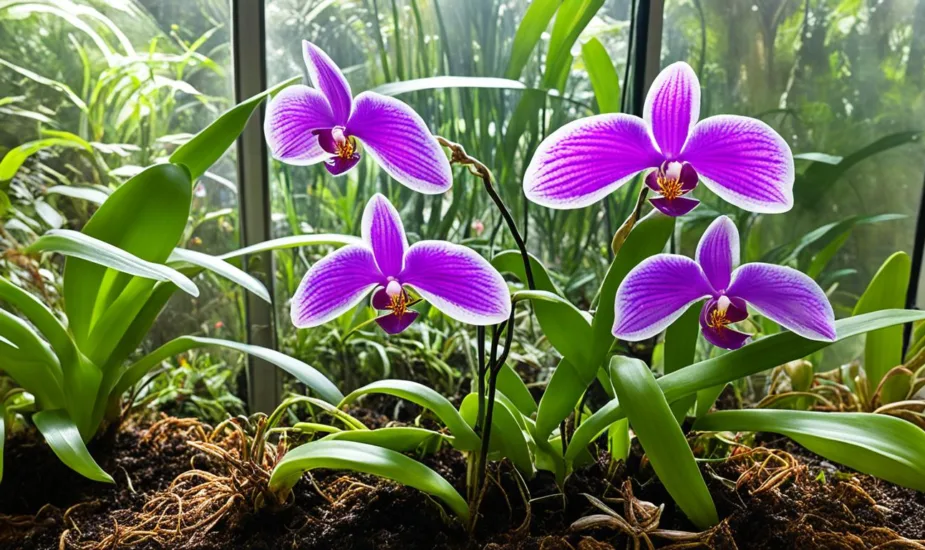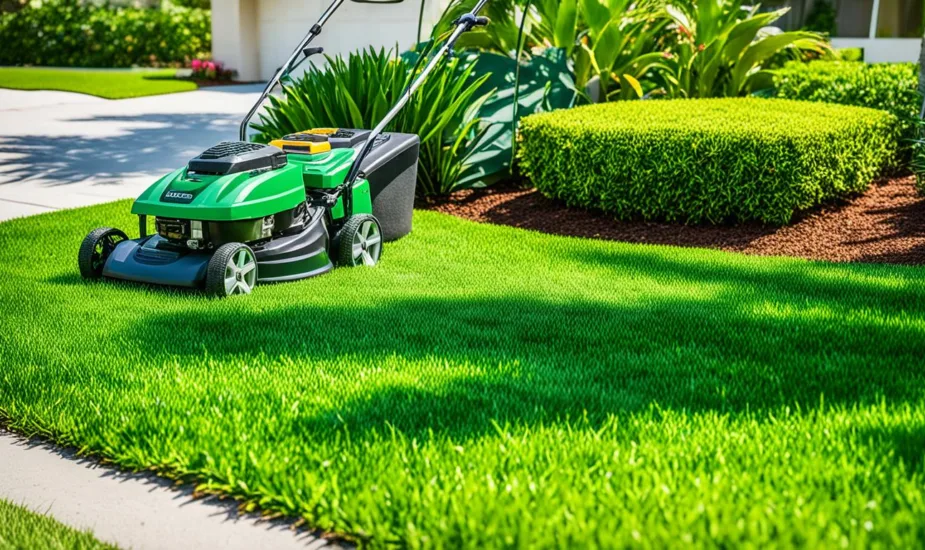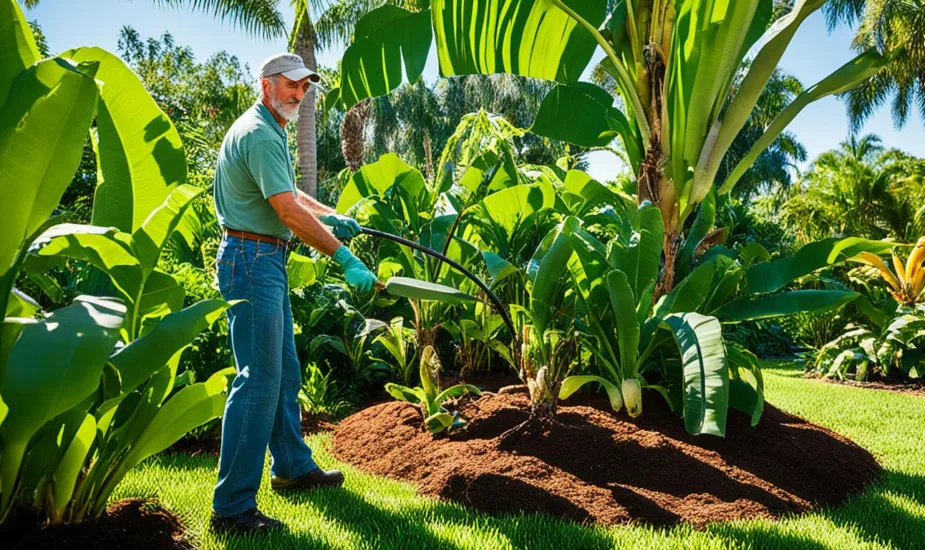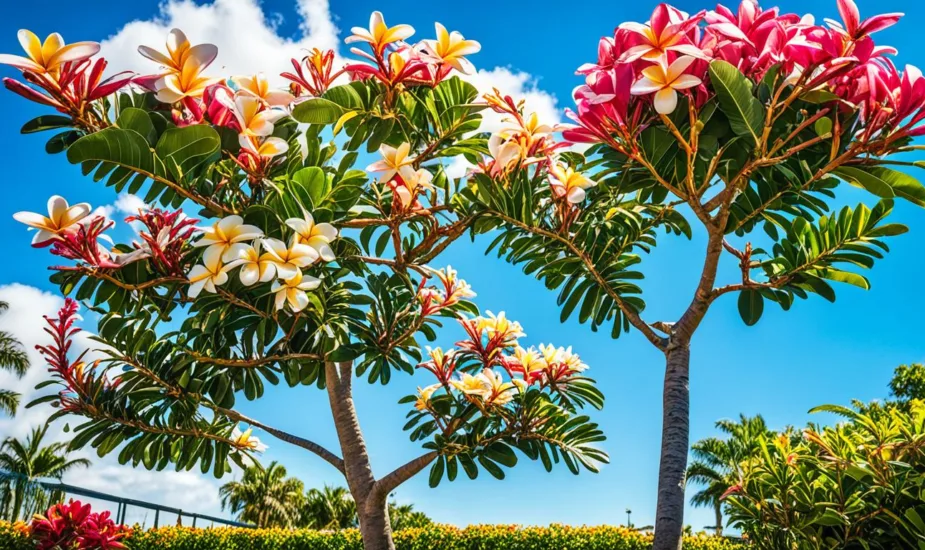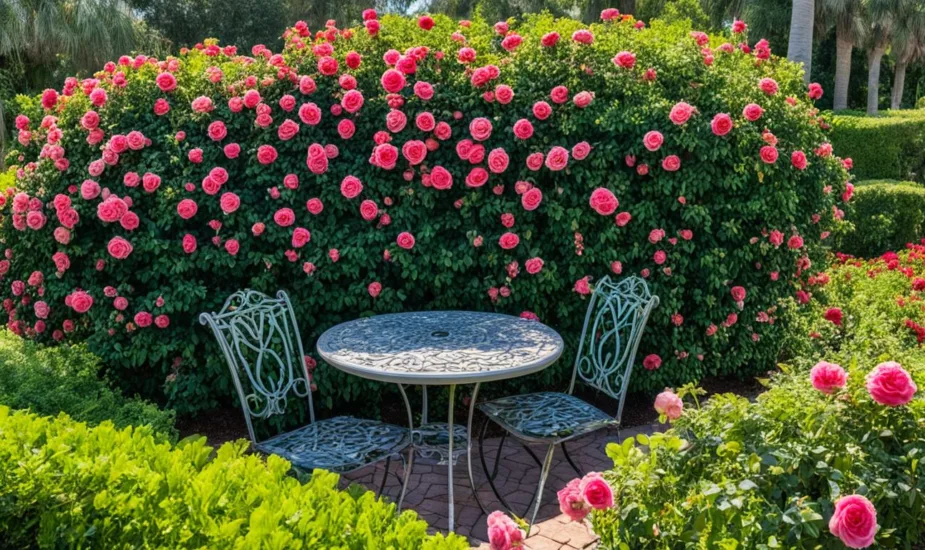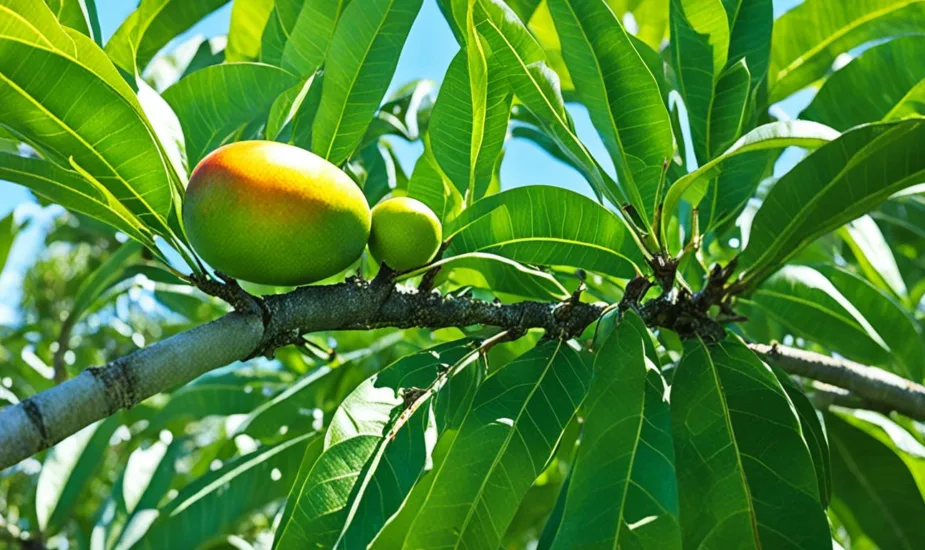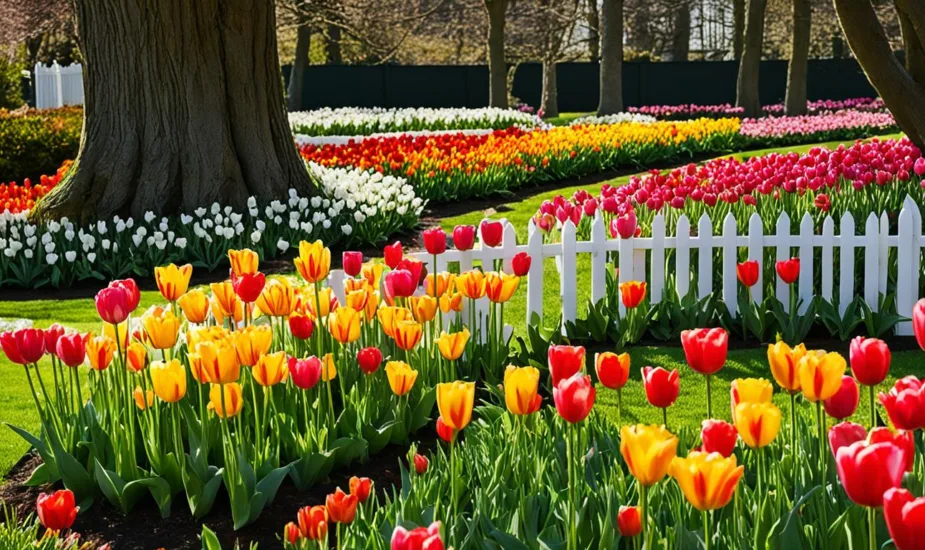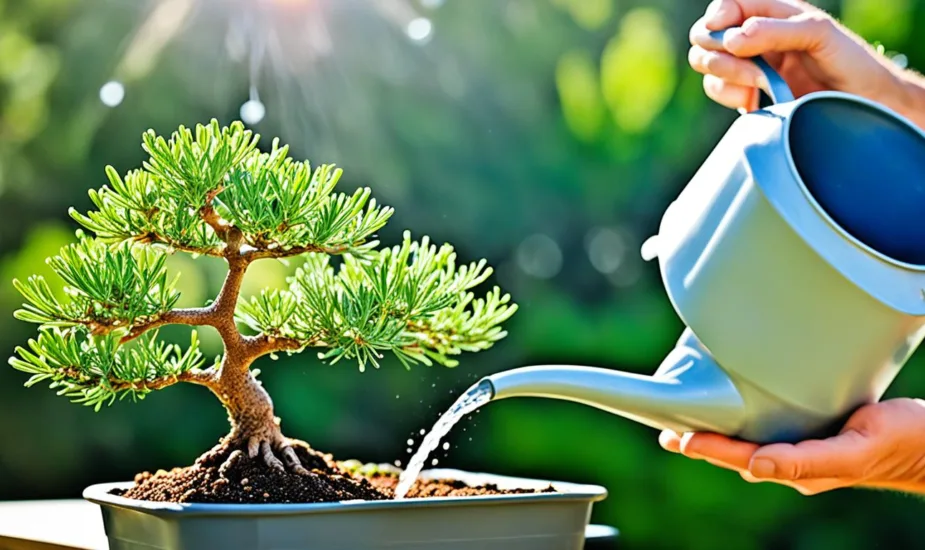Why Do Bonsai Trees Lose Their Leaves? Tips & Fixes
Discover why bonsai trees lose their leaves and learn practical tips for prevention and care to maintain your bonsai's health and beauty.
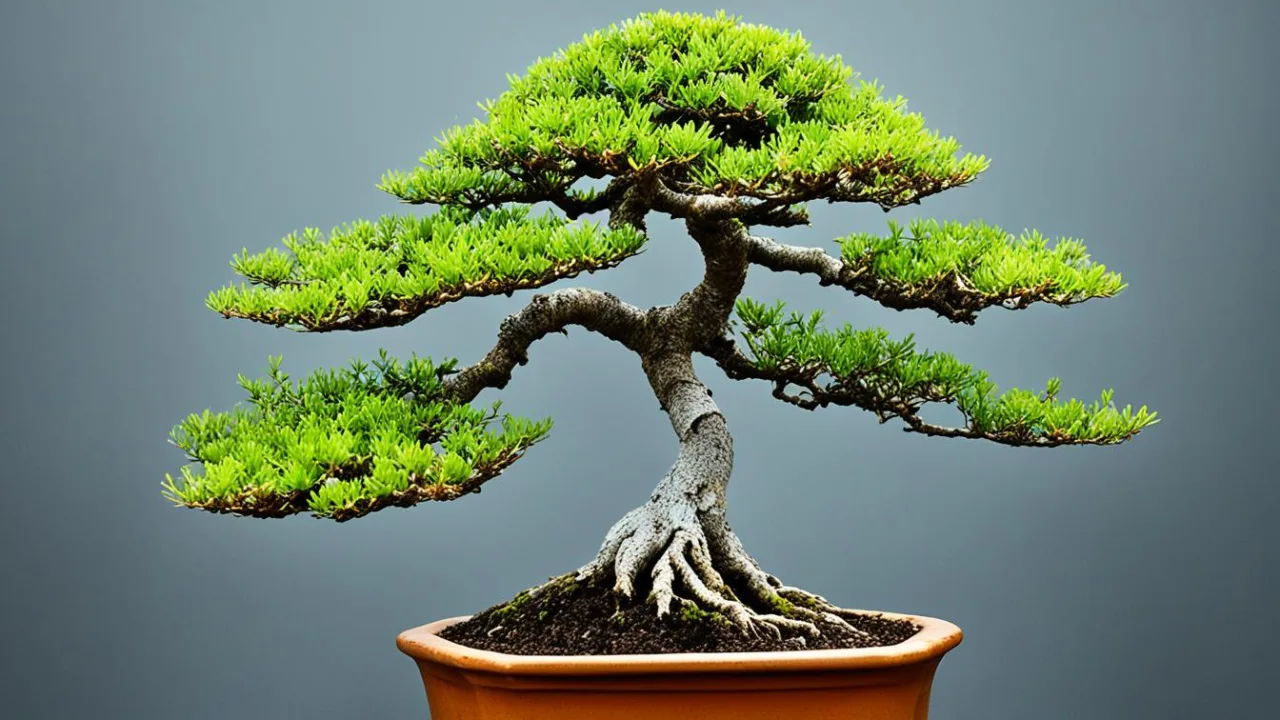
As a devoted bonsai tree enthusiast, I’ve always marveled at the beauty and elegance of these miniature natural wonders. The art of bonsai, with its meticulous care and attention to detail, has captured my heart and sparked a passion within me to create and care for my own miniature masterpiece.
However, like any living thing, bonsai trees have their own needs and challenges. One of the most common concerns that bonsai tree owners face is leaf loss. It can be disheartening to see your once thriving bonsai tree suddenly lose its leaves, leaving you wondering what went wrong and how to fix it.
So, why do bonsai trees lose their leaves? This question has begged for answers, and I’ve embarked on a journey of exploration and discovery to understand the causes behind this phenomenon. Through my experience and research, I’ve learned valuable insights on bonsai tree care and maintenance that can help prevent leaf loss and keep our beloved trees vibrant and healthy.
Join me as we delve into the world of bonsai trees and uncover the tips and fixes to address leaf loss issues. Let’s unlock the secrets to ensuring the longevity and beauty of our bonsai trees, one leaf at a time.
Key Takeaways:
- Leaf loss in bonsai trees is a common concern.
- Understanding the reasons behind leaf loss is crucial for proper care.
- Proper care and maintenance can help prevent further leaf loss.
- Addressing issues such as watering, light exposure, and nutrition is essential for leaf retention.
- By implementing the right techniques, bonsai trees can thrive and bring beauty to your life.
Understanding Bonsai Leaf Loss: Natural vs. Unnatural Causes
Leaf loss in bonsai trees can be categorized into natural and unnatural causes. Bonsai trees go through a seasonal cycle, and certain types, known as deciduous bonsai trees, naturally shed their leaves during the autumn and winter months. This is a normal and healthy process for bonsai trees such as maples and elms. The image below showcases the beautiful fall foliage of a bonsai tree in the midst of its seasonal shedding.
Deciduous Bonsai Trees and Seasonal Shedding
Deciduous bonsai trees follow a natural pattern of leaf loss as part of their seasonal cycle. During these periods, the tree redirects its resources to prepare for winter dormancy. This shedding of leaves allows the bonsai to conserve energy and protect itself from harsh weather conditions. As a bonsai enthusiast, it is essential to understand and anticipate this natural process to avoid unnecessary concern.
Identifying Abnormal Leaf Drop in Bonsai Trees
Abnormal leaf drop in bonsai trees can occur due to various factors. Inadequate care, improper environmental conditions, pests, and diseases can all contribute to abnormal leaf loss. It is crucial to closely monitor your bonsai tree and identify any sudden or excessive leaf drop that goes beyond the natural shedding cycle. By observing the patterns and symptoms, you can determine whether the leaf loss is a result of natural causes or if there are underlying issues that need to be addressed.
Bonsai Trees Lose Their Leaves: Indoor vs. Outdoor Environments
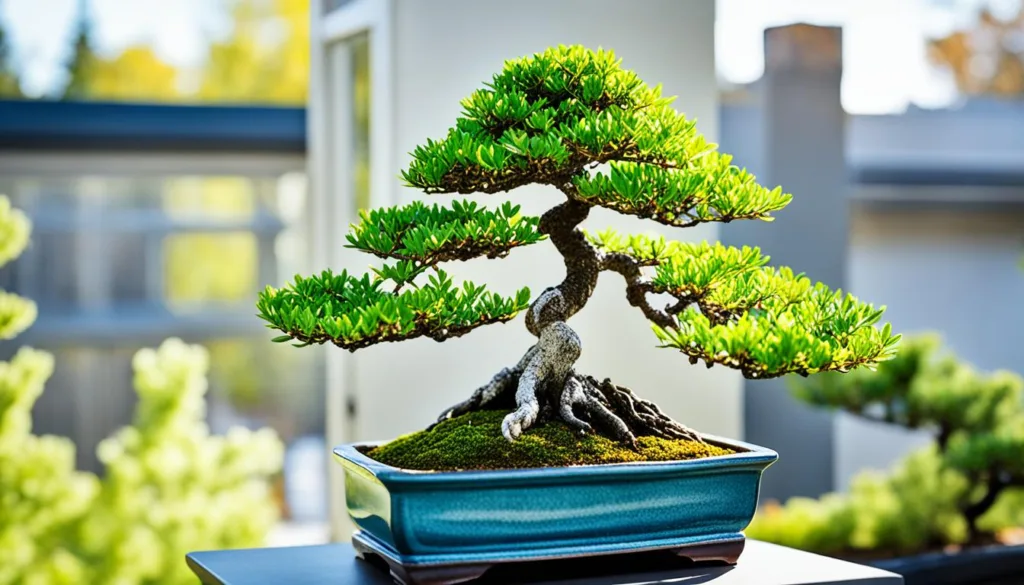
The environment in which a bonsai tree is placed can significantly impact its leaf retention. Indoor bonsai trees require specific care requirements different from outdoor bonsai trees. Understanding the specific care needs for bonsai trees kept indoors versus outdoors is crucial in preventing leaf loss and maintaining overall tree health.
Indoor bonsai trees should be kept in a controlled environment with temperatures above 60°F (15°C) throughout the year. These trees should also be protected from extreme temperature fluctuations, drafts, and dry indoor air. Maintaining the right temperature and humidity levels will help ensure that indoor bonsai trees retain their leaves and thrive.
On the other hand, outdoor bonsai trees need to endure the natural elements and seasonal changes. They are exposed to varying temperatures, sunlight, rain, and wind. Outdoor bonsai trees may experience leaf loss during winter as part of their natural seasonal cycle. However, it is essential to provide adequate protection during extreme weather conditions to prevent excessive leaf loss.
Proper care and attention to the specific needs of indoor and outdoor bonsai trees will help them flourish and maintain their foliage. Consider factors such as temperature, humidity, and overall environmental conditions to create the optimal growth environment for your bonsai trees.
Common Culprits: Inadequate Watering Practices
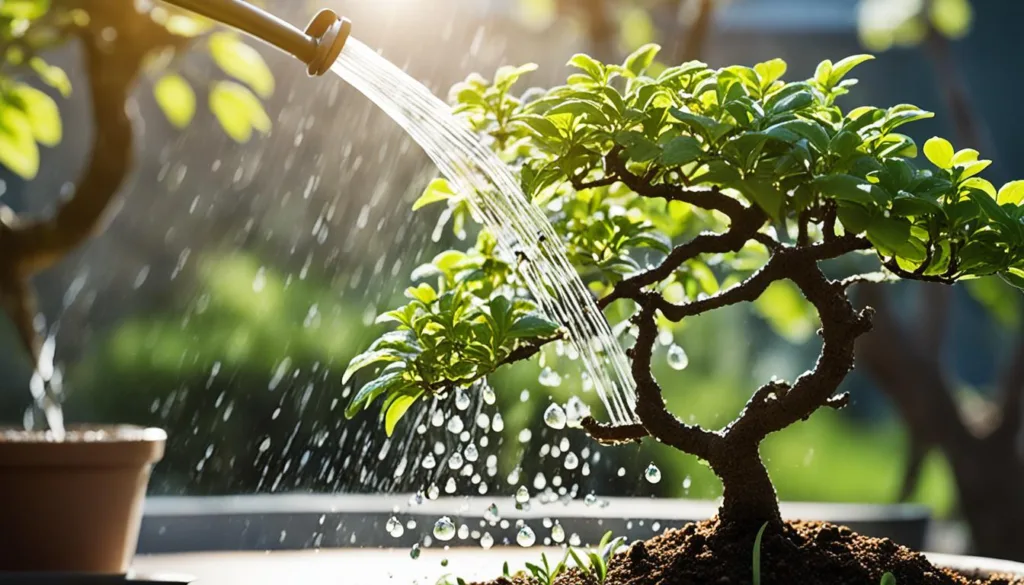
Inadequate watering practices can have a significant impact on the health of bonsai trees and can contribute to leaf loss. It is essential to strike a balance when it comes to watering your bonsai tree to ensure proper hydration and avoid both overwatering and under-watering.
Signs of Overwatering and Its Consequences
Overwatering bonsai trees can be detrimental to their overall health. When a bonsai tree is overwatered, the excess moisture deprives the roots of oxygen, leading to root rot. This can weaken the tree’s ability to absorb nutrients, resulting in leaf drop and, in severe cases, even tree death. To prevent overwatering, closely monitor the moisture levels in the soil and allow it to dry out slightly between waterings.
The Dangers of Under-watering Bonsai Trees
Under-watering is equally harmful to bonsai trees and can cause leaf wilting and eventual drop. When a bonsai tree is under-watered, it suffers from dehydration, leading to stress and damage. The lack of water prevents the tree from absorbing essential nutrients, resulting in weakened foliage and overall poor health. To avoid under-watering, regularly check the moisture levels in the soil and water when necessary, ensuring that the water reaches the entire root system.
Proper bonsai tree watering is crucial to maintaining the health and vitality of your bonsai tree. By understanding the signs of overwatering and under-watering, as well as the consequences of these practices, you can ensure your bonsai tree receives the right amount of hydration for optimal growth and leaf retention.
Placement and Light Exposure: Critical Factors for Leaf Retention

Proper placement and light exposure are critical factors for leaf retention in bonsai trees. The location where you position your bonsai tree and the amount of light it receives play a vital role in its overall health and leaf growth. Let’s explore the optimal light conditions for both indoor and outdoor bonsai trees.
Optimal Indoor Light Conditions for Bonsai Health
Indoor bonsai trees require adequate light to thrive. Placing your indoor bonsai near a window facing south allows it to receive sufficient sunlight throughout the day. South-facing windows typically offer the most intense and direct sunlight, which is beneficial for promoting leaf growth and overall tree health. If a south-facing window is not available, you can consider using artificial lighting, such as fluorescent or LED grow lights, to supplement the light needs of your bonsai tree. Strive to provide your indoor bonsai with consistent light exposure to prevent leaf loss and maintain its vitality.
Outdoor Bonsai: Seeking the Balance of Sunlight and Shade
Outdoor bonsai trees require a careful balance of sunlight and shade. The specific light conditions for outdoor bonsai trees will depend on their species and environmental requirements. Some bonsai trees may prefer partial shade, while others may thrive in full sunlight. It’s important to research and understand the light preferences of your outdoor bonsai tree to ensure its optimal growth and leaf retention. Additionally, consider the natural elements and seasonal changes in your specific location. Protect your outdoor bonsai tree from extreme heat or cold that could cause stress and lead to leaf loss. Regularly monitoring and adjusting the placement of your outdoor bonsai tree will help maintain the ideal light conditions for healthy leaf growth and overall tree vigor.
Nutrition and Fertilization: Striking the Right Balance

Proper nutrition and fertilization play a crucial role in maintaining the health and vitality of bonsai trees. In order to promote robust leaf growth and overall tree health, bonsai trees require a balanced diet of essential nutrients. Understanding the right balance of nutrition and the appropriate fertilization schedule for your bonsai tree is essential to prevent leaf loss and promote long-term tree health.
Just as humans need a well-balanced diet, bonsai trees also require a variety of nutrients to thrive. These nutrients can be obtained through a combination of organic and inorganic fertilizers. Organic fertilizers provide slow-release nutrients that nourish the tree over a longer period of time, while inorganic fertilizers offer quick-acting nutrients that can address immediate deficiencies.
When fertilizing your bonsai tree, it is important to follow a balanced approach. Too much fertilization can lead to nutrient burn and damage to the tree’s roots, while too little fertilization can result in nutrient deficiency and weakened tree health. It is recommended to use a balanced fertilizer specifically formulated for bonsai trees, following the instructions provided by the manufacturer.
In addition to regular fertilization, it is important to maintain proper bonsai tree nutrition through other means. This includes providing the tree with adequate water and ensuring it has access to natural light or appropriate artificial lighting. These factors work in synergy with fertilization to support healthy leaf growth and overall tree vitality.
By striking the right balance between nutrition and fertilization, bonsai tree owners can promote optimal leaf retention and prevent leaf loss. A well-nourished bonsai tree not only enhances its visual appeal but also contributes to its long-term health and longevity.
Conclusion
Leaf loss in bonsai trees can occur due to various factors, both natural and unnatural. However, with a deeper understanding of the reasons behind leaf loss and the implementation of proper care practices, you can prevent further leaf loss and ensure the health and aesthetics of your bonsai trees.
One of the key aspects of bonsai tree care is providing them with adequate water. Overwatering can lead to root rot and weakened tree health, while under-watering can cause dehydration and leaf wilting. Finding the right balance in watering practices is crucial for maintaining proper bonsai tree hydration.
In addition, the placement of your bonsai tree and its exposure to light play significant roles in leaf retention. Indoor bonsai trees require optimal light conditions, such as placing them near a south-facing window for sufficient sunlight. Outdoor bonsai trees need to find the right balance between sunlight and shade, depending on their specific species and environmental requirements.
Furthermore, proper nutrition and fertilization are essential for the health and vitality of your bonsai tree. Providing a balanced diet of essential nutrients will support robust leaf growth and overall tree health. By understanding the right balance of nutrition and following an appropriate fertilization schedule, you can prevent leaf loss and promote long-term tree health.
To sum up, caring for bonsai trees and preventing leaf loss requires a holistic approach. By ensuring adequate water, appropriate light exposure, and balanced nutrition, you can create an optimal environment for your bonsai trees to thrive. With proper care and attention, your bonsai trees will continue to bring you beauty and joy for years to come.
 Little Garden Tips
Little Garden Tips




